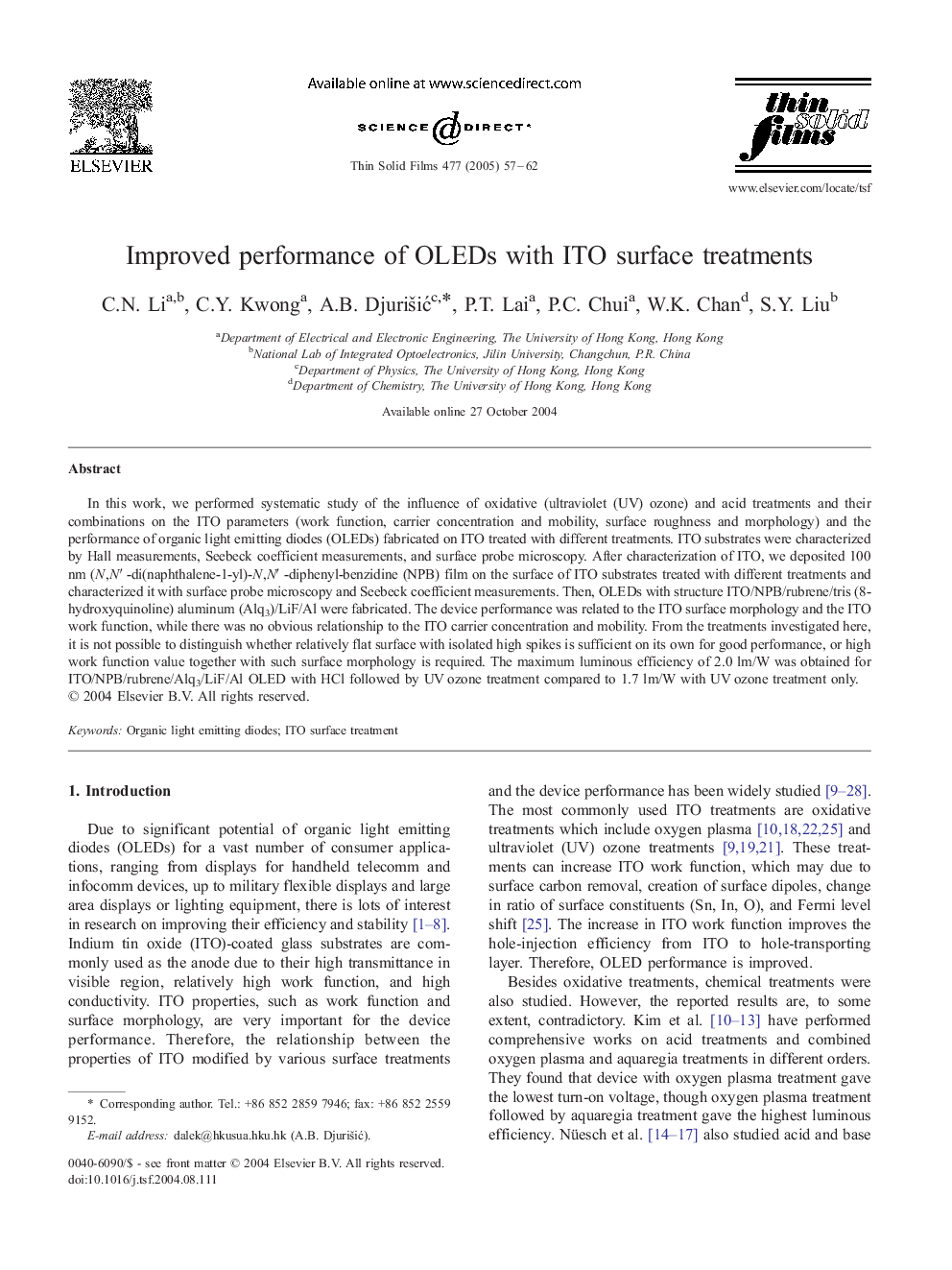| Article ID | Journal | Published Year | Pages | File Type |
|---|---|---|---|---|
| 9812840 | Thin Solid Films | 2005 | 6 Pages |
Abstract
In this work, we performed systematic study of the influence of oxidative (ultraviolet (UV) ozone) and acid treatments and their combinations on the ITO parameters (work function, carrier concentration and mobility, surface roughness and morphology) and the performance of organic light emitting diodes (OLEDs) fabricated on ITO treated with different treatments. ITO substrates were characterized by Hall measurements, Seebeck coefficient measurements, and surface probe microscopy. After characterization of ITO, we deposited 100 nm (N,Nâ²-di(naphthalene-1-yl)-N,Nâ²-diphenyl-benzidine (NPB) film on the surface of ITO substrates treated with different treatments and characterized it with surface probe microscopy and Seebeck coefficient measurements. Then, OLEDs with structure ITO/NPB/rubrene/tris (8-hydroxyquinoline) aluminum (Alq3)/LiF/Al were fabricated. The device performance was related to the ITO surface morphology and the ITO work function, while there was no obvious relationship to the ITO carrier concentration and mobility. From the treatments investigated here, it is not possible to distinguish whether relatively flat surface with isolated high spikes is sufficient on its own for good performance, or high work function value together with such surface morphology is required. The maximum luminous efficiency of 2.0 lm/W was obtained for ITO/NPB/rubrene/Alq3/LiF/Al OLED with HCl followed by UV ozone treatment compared to 1.7 lm/W with UV ozone treatment only.
Keywords
Related Topics
Physical Sciences and Engineering
Materials Science
Nanotechnology
Authors
C.N. Li, C.Y. Kwong, A.B. DjuriÅ¡iÄ, P.T. Lai, P.C. Chui, W.K. Chan, S.Y. Liu,
